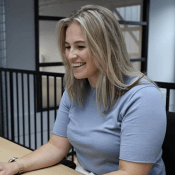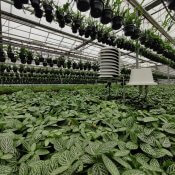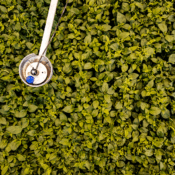Practical IoT: maintaining optimum conditions for tulip and lily bulbs
Jan de Wit en Zonen (Jan de Wit and Sons) have specialized in the export, processing and cultivation flowerbulbs since 1922, delivering to clients in more than twenty countries across Europe, Asia and North America. The family business specializes in tulip and lily bulbs, as well as other flower varieties including hyacinths and irises. De Wit and Sons know that delivering flowers of the highest quality is the key to maintaining and expanding their position in the global flower market. Data captured by a variety of wireless sensors provides the company with an advantage: growing and processing each flower variety with precision.
De Wit and Sons’ challenge? Each flower variety has different needs, and requires a unique approach. For example, lilies are winter flowers, while tulips and hyacinths are summer products. To make sure they’re delivering the best products to their customers, it’s crucial that De Wit and Sons optimize conditions for the cultivation and export of each flower type.
Monitoring ethylene, air currents and extreme temperatures with wireless sensors
To capture key data on the cultivation, processing and storage of their products, Jan De Wit and Sons installs the 30MHz Sensor Toolkit in strategic locations throughout the organization. “When the health and quality of our product is at stake, it’s crucial that we have accurate data. We know that sensor placement is very important, so we make sure that each location is technically equipped with a power supply and internet connection” notes Deputy Director Marcel Fit.
De Wit and Sons capture data on ethylene, temperature and humidity, as well as air currents. Fit explains why these metrics are key to the company’s success: “When it comes to lilies, it’s important that they’re stored in the ice, between -1 and -1,5 ºC. Lily plants can withstand temperatures of -30ºC, but their bulbs are much more vulnerable in storage. Precise temperatures are key. Furthermore, we have to monitor ethylene levels and ensure sufficient bulb drying to lower the risk of bulb rot. We monitor ventilation to make sure bulbs are properly dried after rinsing.”

A combination of sensor types
Using sensor data and real-time alerts, De Wit and Sons keep a close eye on potential threats to their flower bulbs. A continuous flow of information makes it easy to intervene and adjust conditions to prevent product loss. “The ethylene measures ethylene in ppb. The anemometer monitors the air currents blown through the cubicles during the drying process, and the temperature-humidity sensors help us monitor the cooling cells day and night. “
Working with IoT partner 30MHz
“With the 30MHz Sensor Toolkit, we actually measure ethylene, air currents and temperatures below zero. The data is recorded in a clear dashboard that we can easily log into and use. The Toolkit’s notifications are also very important to our business. If conditions change, the responsible staff is aware and can respond straight away.”

With a growing sensor network in the Netherlands, De Wit and Sons plan to take their approach monitoring global: “Looking forward, the next step is customer measurements abroad. We know there are no limitations with the Sensor Toolkit, so our next challenge is guaranteeing accessibility on-site.”


30MHz is typing… Our extended support team is ready to chat!
At 30MHz we think it’s important that our users can use our platform in an optimal way. At times you may have questions and you would like some help from our support team. Email and our support page filled with helpful articles were your go to’s. But we thought it was time for something extra… ...Read more
New 30MHz connect casing: How we protect your tech
To make sure your dataflow is fully protected, 30MHz introduces a new connect casing: waterproof, dust proof and even resistant to hits. This special shield will last longer and ensure a reliable dataflow from the connected sensor. What does that full protection mean? That’s what we will explain in this article. Watertight: resistant to wetness ...Read more
Most popular sensors for your greenhouse
As a grower, you know that optimal crop development starts with precise monitoring of your cultivation environment. But how do you transform raw data into actionable insights for your crops? This is where our wireless sensors and the 30MHz platform come together. Our sensors measure essential variables such as VPD, dew point, moisture deficit, EC, ...Read more


